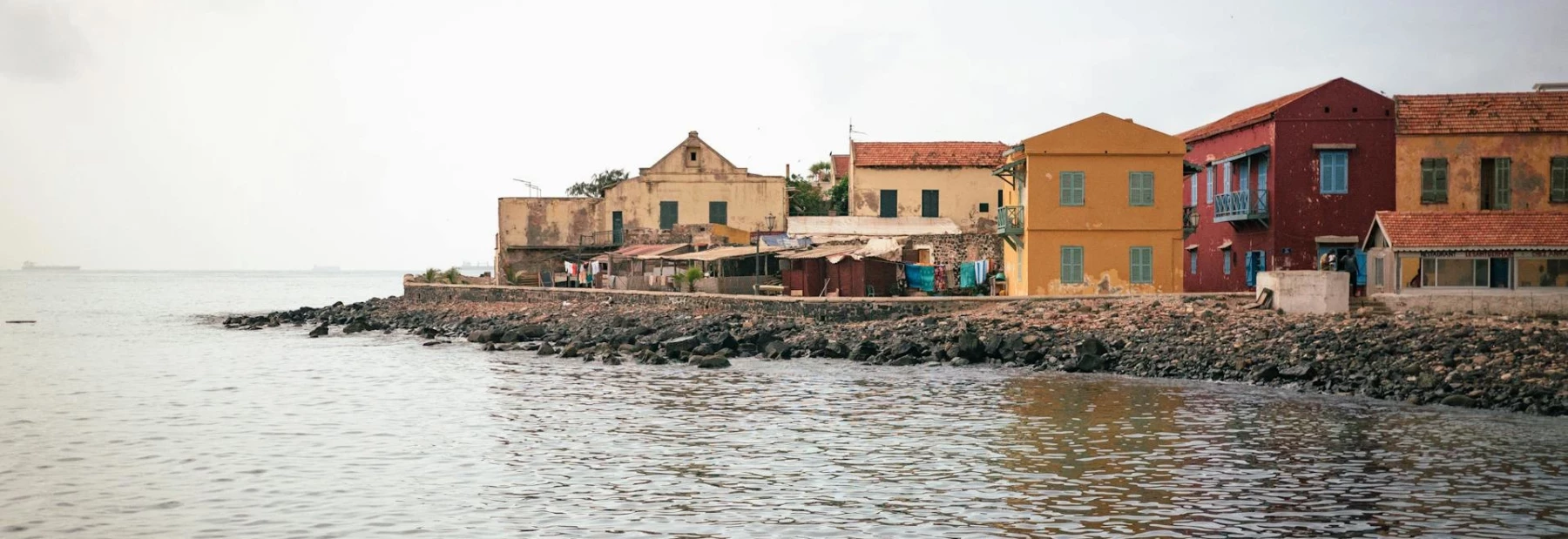To visit - Dakar
Dakar, the capital of Senegal, is a captivating destination for travelers from around the world. Located on the West African coast, this dynamic city offers a rich experience in culture, history, and diversity.
Upon your arrival in Dakar, you'll be greeted by the vibrant atmosphere of its bustling streets, colorful markets, and beautiful beaches. Let yourself be carried away by the sounds of traditional Senegalese music, mbalax, which resonates through the city, or by the calls to prayer echoing from the mosques scattered across the urban landscape.
Explore Dakar's fascinating neighborhoods, such as the Medina with its narrow alleys and traditional shops, or the island of Gorée, a UNESCO World Heritage Site that bears witness to the painful history of the slave trade.
Food enthusiasts will be delighted by the variety of Senegalese flavors. Taste the delights of street food, such as fresh grilled fish served with rice and spicy sauce, or enjoy a delicious plate of thiéboudienne, the national dish, made from fish, rice, and vegetables.
For a relaxing break, head to Dakar's beaches, where you can indulge in surfing, swimming, or simply relaxing under the African sun.
Whether you're seeking adventure, relaxation, or cultural discovery, Dakar promises you an unforgettable travel experience, imbued with warmth and African authenticity.
The 13 essential things to do in Dakar :
Summary
- To visit
-
- 1 - Gorée Island
- 2 - Sandaga Market
- 3 - African Renaissance Monument
- 4 - Yoff Beach
- 5 - The Medina of Dakar
- 6 - Mosque of the Divinity
- 7 - Contemporary art galleries
- 8 - Hann Park
- 9 - Museum of Black Civilizations
- 10 - Langue de Barbarie National Park
- 11 - Pink Lake (Lake Retba)
- 12 - Soumbédioune craft village
- 13 - Senegalese cuisine tasting
- Dakar - Where to Stay?
- Dakar - How to get around?
- Dakar - Best period
1 - Gorée Island
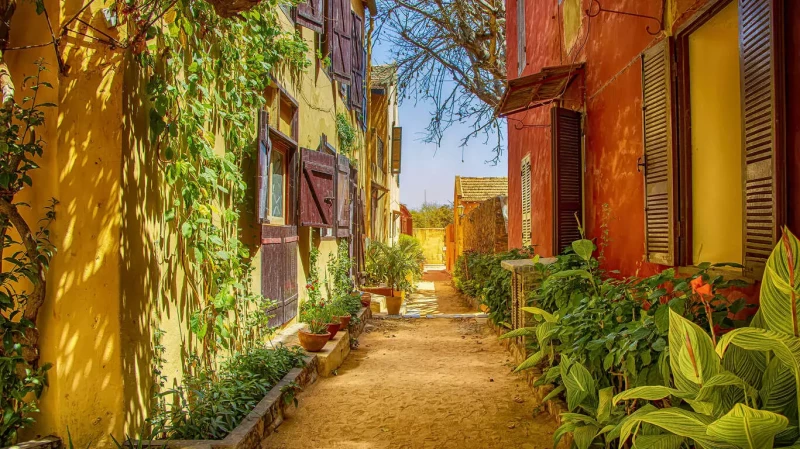
Île de Gorée, is a small island located just off the coast of Senegal's capital, Dakar. It holds immense historical significance, particularly due to its association with the transatlantic slave trade.
During the 15th to the 19th centuries, Gorée Island was a major hub for the slave trade, serving as a key departure point for African slaves being shipped to the Americas. The island's Maison des Esclaves (House of Slaves) is perhaps its most famous landmark, serving as a museum and memorial to the horrors of the slave trade. The House of Slaves is believed to have been a holding facility for slaves before they were shipped across the Atlantic Ocean.
In 1978, Gorée Island was designated as a UNESCO World Heritage Site in recognition of its historical significance and efforts to preserve its cultural heritage. Today, it is a popular tourist destination, attracting visitors from around the world who come to learn about its history, explore its colonial architecture, and soak in its scenic beauty. Additionally, the island is home to a vibrant community of artists, musicians, and craftsmen.
 Our tips for getting the most out of your experience.
Our tips for getting the most out of your experience.
If you're planning to visit Gorée Island, here are some tips that might be helpful:
-
Plan your visit in advance: Gorée is a popular tourist destination, especially during the more pleasant months of the year. Make sure to plan your visit in advance to avoid crowds and to ensure you can access the attractions you want to see.
-
Transportation: You can reach Gorée Island by taking a ferry from the port of Dakar. Check ferry schedules in advance and arrive early to avoid delays.
-
Guided tour: Consider taking a guided tour of the island. Many local guides offer tours that provide in-depth historical and cultural information about Gorée, enriching your experience.
-
House of Slaves: The House of Slaves is one of Gorée's most significant attractions. Allow time to visit this historic site and reflect on its importance in world history.
-
Explore the island: Gorée is a picturesque island with beautiful cobblestone streets and colonial architecture. Take the time to explore the island on foot to discover its hidden charms and enjoy views of the ocean.
-
Interact with locals: Don't hesitate to strike up a conversation with the island's residents. They can provide useful tips and share interesting stories about life on Gorée.
-
Bring water and sunscreen: It can get hot on the island, especially during the summer months. Make sure to bring water and sunscreen to stay hydrated and protect your skin from the sun.
By following these tips, you can make the most of your visit to Gorée Island and learn more about its fascinating history.
2 - Sandaga Market
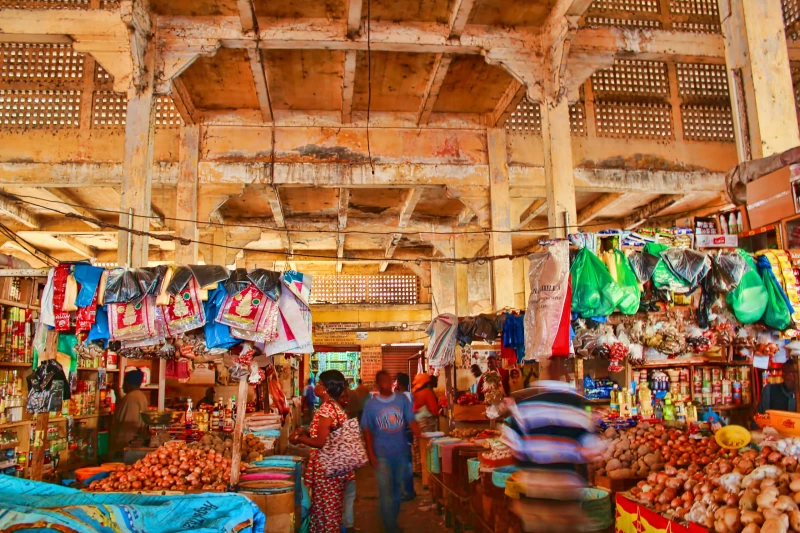
The Sandaga Market is one of the most famous markets in Dakar, the capital of Senegal. It is located in the Plateau district, at the heart of the city. Sandaga is renowned for its lively atmosphere and vast variety of products. You can find almost everything there, from clothing and fabrics to food items, local crafts, and souvenirs.
Sandaga Market is an important meeting point for the residents of Dakar, as well as for visitors and tourists. It offers a unique sensory experience with its vibrant colors, exotic scents, and the sounds of bargaining.
However, due to its popularity and crowded nature, visitors are advised to remain vigilant against pickpocketing and keep an eye on their belongings. Despite this, a visit to the Sandaga Market is a must for those looking to experience the hustle and bustle and diversity of daily life in Dakar.
 Our tips for getting the most out of your experience.
Our tips for getting the most out of your experience.
Visiting Sandaga Market in Dakar can be a memorable experience, but it can also be a bit overwhelming due to its size and liveliness. Here are some tips to make the most of your visit:
-
Pick the right time: The market is generally quieter in the morning. If you prefer to avoid crowds, consider visiting early in the day.
-
Keep your valuables secure: Wear a money belt or a discreet pouch to keep your money, identification, and other valuables safe from pickpockets.
-
Negotiate with respect: Bargaining is an integral part of the market experience, but always be respectful and don't excessively haggle. Acknowledging the work and efforts of the sellers is important.
-
Be prepared to haggle: Sellers may initially set prices high, so don't be shy to negotiate. However, know your limits and be prepared to walk away if the price doesn't suit you.
-
Wear comfortable clothing and appropriate shoes: Since you'll likely be spending a lot of time walking and exploring the market, make sure you're comfortable. Comfortable, lightweight shoes are particularly important.
-
Explore the surroundings: Sandaga Market is surrounded by many other shops and boutiques. After exploring the main market, don't hesitate to venture into the surrounding streets to discover other hidden gems.
-
Taste local specialties: Take the opportunity to taste local cuisine and snacks sold in the market. It's a great way to experience Senegalese culinary culture.
-
Respect the local culture: Respect local traditions and customs by dressing appropriately and treating vendors and locals with respect.
By following these tips, you should be able to fully enjoy your visit to Sandaga Market and discover everything it has to offer.
3 - African Renaissance Monument
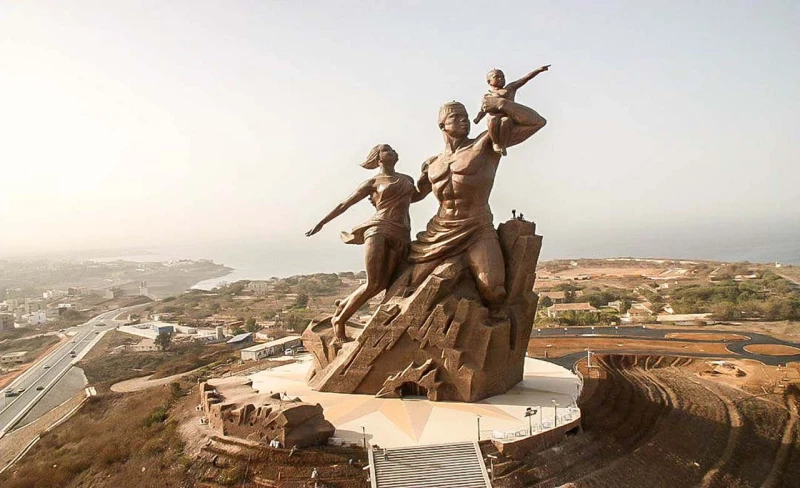
The African Renaissance Monument is an imposing sculpture located in Dakar, Senegal. Inaugurated in April 2010, it is one of the most iconic structures on the African continent. Designed by Senegalese architect Pierre Goudiaby Atepa, the monument depicts a man, a woman, and a child raising their arms towards the sky, symbolizing the aspiration for unity, solidarity, and development in Africa.
The monument stands at 49 meters tall, with a main statue of 33 meters and a pedestal of 16 meters. It is constructed from bronze and concrete and is situated on an artificial hill, providing a panoramic view of the city of Dakar.
The construction of this monument sparked debates and controversies, notably due to its high cost and imposing dimensions. Some critics argue that the resources used for its construction could have been better invested in sectors such as education or healthcare. However, for many, the African Renaissance Monument represents a symbol of pride and hope for the continent, as well as a testament to Senegal's commitment to the development and progress of Africa.
4 - Yoff Beach
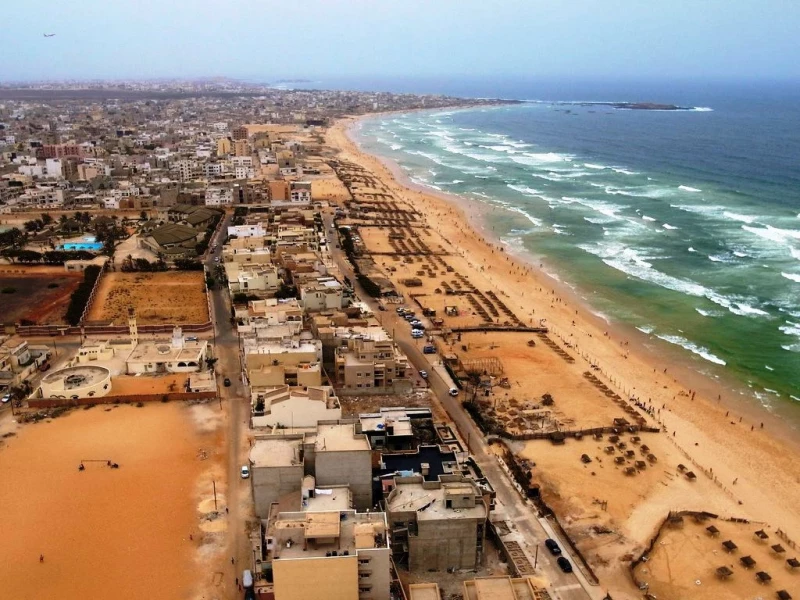
Yoff Beach is a popular beach located in the Yoff neighborhood of Dakar, Senegal. It's situated along the Atlantic Ocean coastline and is known for its golden sands and picturesque views. Yoff Beach is frequented by both locals and tourists, offering a serene escape from the hustle and bustle of the city.
The beach is often bustling with activity, with locals playing soccer or volleyball, fishermen bringing in their catches, and vendors selling snacks and refreshments. It's a great spot for sunbathing, swimming, or simply taking a leisurely stroll along the shoreline.
Yoff Beach also holds cultural significance, as it's a gathering place for various events and celebrations, including traditional ceremonies and festivals. Additionally, it's a popular spot for surfers, with waves suitable for both beginners and experienced surfers.
Overall, Yoff Beach offers a relaxing and vibrant atmosphere where visitors can enjoy the beauty of Senegal's coastline and immerse themselves in the local culture.
 Our tips for getting the most out of your experience.
Our tips for getting the most out of your experience.
If you're planning to visit Yoff Beach in Dakar, here are some tips to make your experience more enjoyable:
-
Sun Protection: Make sure to bring sunscreen, a hat, and sunglasses to protect yourself from UV rays during your time on the beach.
-
Hydration: Dakar can get hot, especially during the summer months. Bring plenty of water to stay hydrated throughout the day.
-
Timing: Try to visit the beach early in the morning or late in the afternoon to avoid the hottest hours of the day. It's also a great time to enjoy the beautiful sunrises and sunsets over the ocean.
-
Vigilance: Like in any tourist area, keep an eye on your belongings and don't leave valuables unattended on the beach.
-
Activities: Take advantage of the activities available on the beach, such as surfing, beach soccer, beach volleyball, or simply swimming in the ocean.
-
Local Interaction: Don't hesitate to interact with local residents, but be respectful of their space and culture.
-
Exploration: Beyond the beach, explore the Yoff neighborhood to discover its culture, local restaurants, and craftsmanship.
By following these tips, you can fully enjoy your visit to Yoff Beach and have a memorable experience in Dakar.
5 - The Medina of Dakar
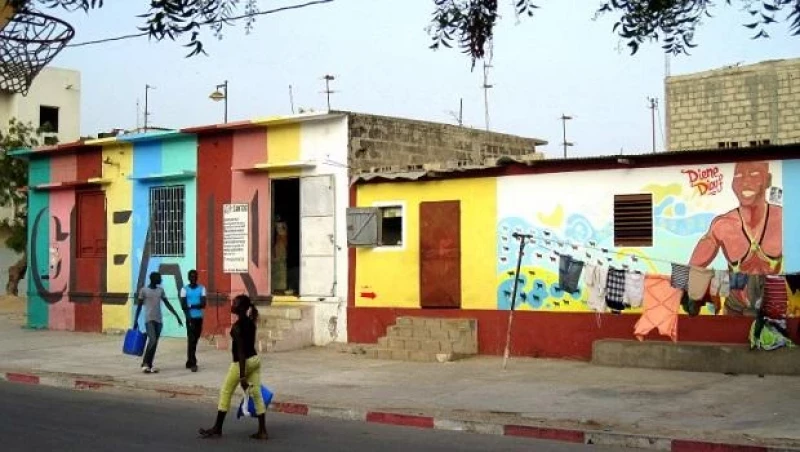
The Médina of Dakar, also known simply as La Médina, is one of the oldest and most emblematic neighborhoods in the city of Dakar, the capital of Senegal. This neighborhood is famous for its traditional architecture, narrow winding streets, and vibrant cultural life.
Originally, La Médina was built as a walled city during the French colonial period, but over time, its structure has expanded beyond the original boundaries. It is home to a diverse mix of residents, from traders and artisans to working-class families and artists.
Among its highlights is the Grand Market Sandaga, where a wide variety of local products can be found, ranging from fresh foods to crafts and textiles. It also houses several craft workshops where visitors can observe the making of products such as gold jewelry, brightly colored fabrics, and carved wooden sculptures.
In addition to its cultural richness, La Médina is also known for its events and festivals, which include religious celebrations, sports events, and music festivals reflecting the ethnic and cultural diversity of Senegal.
Despite its historic charm, La Médina faces modern challenges such as traffic congestion, lack of adequate infrastructure, and housing issues. However, it remains a vibrant and lively place that attracts both residents and visitors from around the world.
6 - Mosque of the Divinity
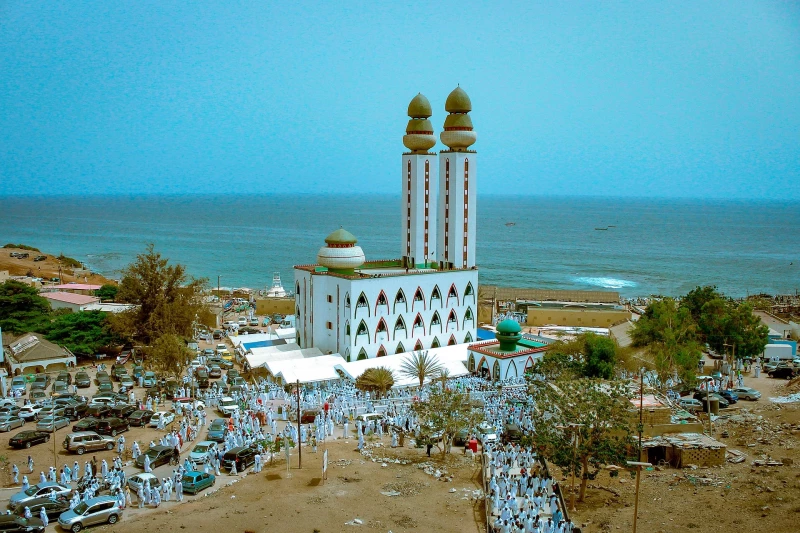
The Mosquée de la Divinité, or the Mosque of Divinity, is a prominent religious landmark located in Dakar, Senegal. Situated in the Ouakam district, overlooking the Atlantic Ocean, this mosque is renowned for its unique and striking architecture.
The mosque was designed by the Senegalese architect Cheikh Ngom and completed in 1997. It stands out for its modern and innovative design, which blends traditional Islamic architectural elements with contemporary influences. The mosque's main dome is particularly noteworthy, resembling the shape of a stylized crown or a shell, with intricate geometric patterns adorning its surface.
One of the most distinctive features of the Mosquée de la Divinité is its location on a promontory, offering panoramic views of the ocean and the surrounding landscape. This setting enhances the spiritual experience for worshippers and visitors alike, providing a serene and tranquil atmosphere for prayer and contemplation.
In addition to its religious significance, the Mosquée de la Divinité has become a symbol of Senegalese cultural identity and architectural innovation. It attracts tourists and architecture enthusiasts from around the world who come to admire its breathtaking design and learn about its cultural significance.
Overall, the Mosquée de la Divinité stands as a testament to the rich architectural heritage of Senegal and serves as a beacon of spiritual enlightenment and cultural pride for the people of Dakar.
7 - Contemporary art galleries
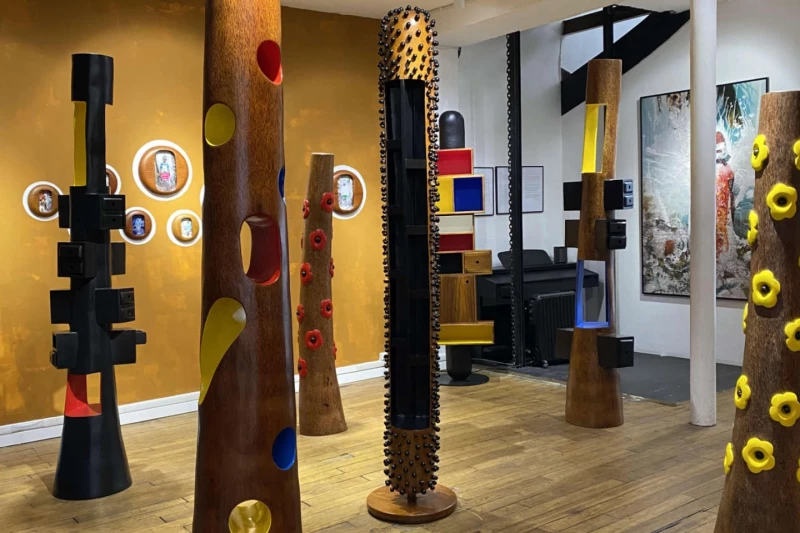
In Dakar, the capital city of Senegal, there are several contemporary art galleries showcasing the vibrant and diverse artistic scene of the country and the wider region. Some notable contemporary art galleries in Dakar include:
-
Galerie Arte: Situated in the heart of Dakar, Galerie Arte is a prominent space dedicated to contemporary African art. It features exhibitions of works by both established and emerging artists from Senegal and beyond, covering a wide range of mediums including painting, sculpture, photography, and mixed media.
-
Raw Material Company: This contemporary art center located in Dakar's Sicap Amitié neighborhood focuses on promoting critical discourse and experimentation in contemporary art. It hosts exhibitions, residencies, workshops, and public programs that engage with pressing social and political issues.
-
Galerie Antenna: Galerie Antenna is known for its commitment to showcasing the work of emerging Senegalese artists. It provides a platform for young talents to exhibit their creations and connects them with local and international audiences.
-
Musée Boribana: While primarily a museum, Musée Boribana also hosts contemporary art exhibitions, particularly those that explore the intersections between traditional and contemporary artistic practices in Senegal and Africa as a whole.
-
Keur Gorgui Gallery: This gallery, located in the Gorgui neighborhood of Dakar, is dedicated to promoting contemporary African art. It features a diverse range of exhibitions, workshops, and cultural events aimed at fostering dialogue and creativity within the local art community.
These galleries, among others, contribute to Dakar's vibrant cultural landscape by providing platforms for artists to showcase their work, fostering dialogue and exchange, and enriching the cultural experiences of residents and visitors alike.
8 - Hann Park
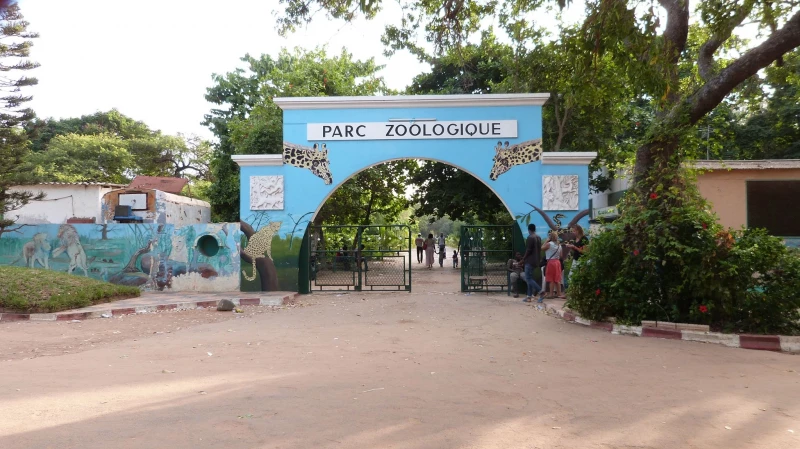
The Parc de Hann is a significant urban park located in Dakar, Senegal. It is one of the largest green spaces in the city and serves as a recreational area for residents and visitors alike. The park is known for its lush vegetation, walking trails, and open spaces for picnics and relaxation.
Originally established as a botanical garden in the early 20th century, the Parc de Hann has evolved into a multi-purpose park with various amenities. It features playgrounds for children, sports facilities, and areas for cultural events and gatherings.
The park is also home to diverse plant species, including indigenous trees and shrubs, making it an important ecological site within the city. It provides a tranquil escape from the hustle and bustle of urban life and is a popular destination for nature enthusiasts and families.
Overall, the Parc de Hann plays a vital role in enhancing the quality of life in Dakar, offering a space for recreation, leisure, and appreciation of nature.
9 - Museum of Black Civilizations
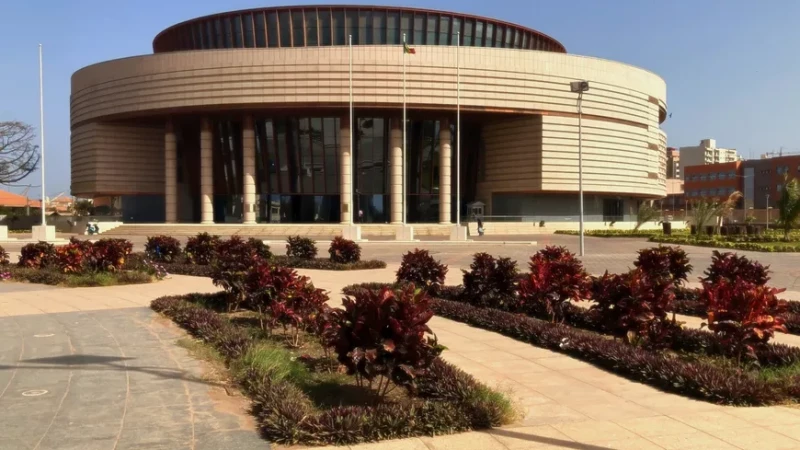
This museum presents a diverse collection of artifacts, artworks, historical documents, and cultural objects that illustrate the richness and diversity of black civilizations across the African continent and beyond. The museum's exhibitions cover a broad period of African history, from ancient civilizations to more contemporary eras.
The Museum of Black Civilizations also aims to promote understanding and appreciation of the contributions of African civilizations to global culture, as well as to encourage intercultural dialogue and reflection on contemporary issues related to identity, cultural diversity, and African heritage.
As a major cultural institution in Dakar, the museum attracts local and international visitors interested in African history, culture, and art. It also contributes to strengthening Dakar's status as a cultural and intellectual hub in West Africa.
10 - Langue de Barbarie National Park
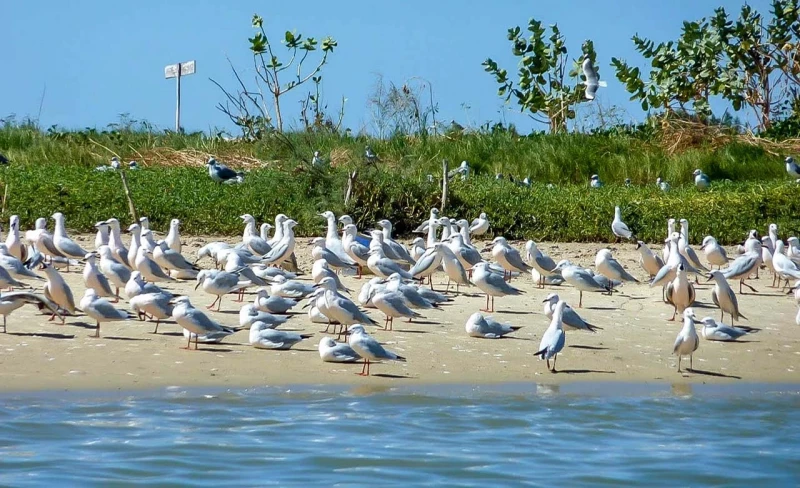
The Langue de Barbarie National Park is a protected area located near Saint-Louis, Senegal, at the mouth of the Senegal River. Established in 2005, the park covers approximately 10,000 hectares and is characterized by its diverse ecosystems, including sandy beaches, coastal dunes, wetlands, and mangrove forests.
This national park is renowned for its rich biodiversity, serving as a crucial habitat for numerous species of birds, fish, mammals, and reptiles. It is particularly significant as a stopover point for migratory birds traveling between Europe and sub-Saharan Africa.
One of the key features of the Langue de Barbarie National Park is its role in the conservation of endangered species, such as the Mediterranean monk seal and the hawksbill turtle, which use the park's beaches for nesting.
In addition to its ecological importance, the park also offers opportunities for eco-tourism, birdwatching, and nature appreciation. Visitors can explore the park through guided tours, boat trips along the river and coastline, and hiking along designated trails.
However, it's worth noting that the park faces various challenges, including habitat degradation, overfishing, and human encroachment. Efforts are being made by local authorities and conservation organizations to address these issues and ensure the long-term sustainability of the Langue de Barbarie National Park.
11 - Pink Lake (Lake Retba)
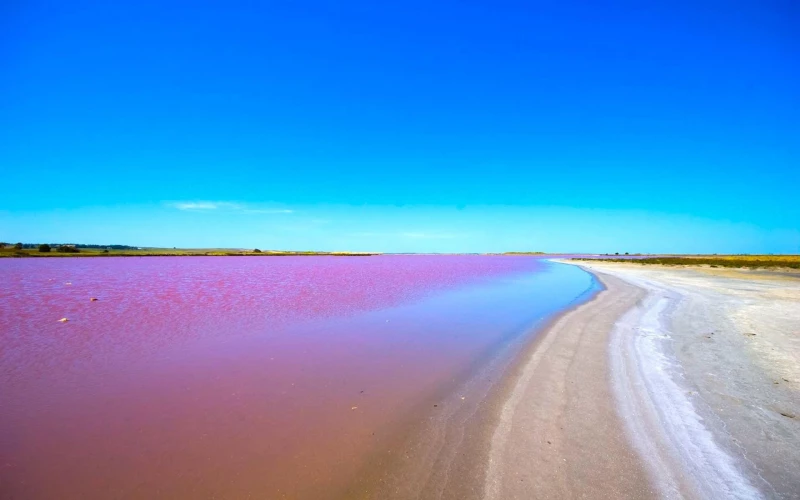
The Lac Rose, also known as Lake Retba, is a popular tourist destination located approximately 35 kilometers northeast of Dakar, the capital of Senegal. This lake gets its name from the pink hue of its waters, caused by the presence of certain algae and bacteria, as well as the high concentration of salt.
From Dakar, visitors can reach Lac Rose by car, taxi, or by joining organized tours offered by local tourism agencies. The journey typically takes about an hour, depending on traffic conditions.
Upon arrival at the lake, visitors can enjoy various activities. The most iconic experience is swimming in the salty waters, which provide a unique floating sensation due to their high salinity, similar to that of the Dead Sea. Travelers can also observe the activities of local workers who harvest salt from the lake.
In addition to swimming, visitors can also enjoy quad biking, camel rides, and visits to nearby fishing villages to experience local life and the surrounding landscapes.
Lac Rose is not only a fascinating natural wonder but also a place where visitors can immerse themselves in Senegalese culture and traditions while enjoying spectacular scenery.
 Our tips for getting the most out of your experience.
Our tips for getting the most out of your experience.
If you're planning to visit Lac Rose from Dakar, here are some tips to make your experience more enjoyable:
-
Plan Your Trip: Check the weather conditions and plan your visit accordingly. Temperatures can be high, so make sure to bring plenty of water and sunscreen to protect yourself from the sun.
-
Transportation: You can opt for a taxi or rent a car to get to Lac Rose. If you choose to drive, ensure you have clear directions or a GPS, as some roads might be a bit tricky to navigate.
-
Guided Tours: Consider joining a guided tour from Dakar. This can be convenient as the guide will take care of logistics and can provide interesting information about the lake and its surroundings.
-
Departure Time: Try to leave early in the morning to avoid the midday heat and to enjoy a more peaceful atmosphere at the lake.
-
Bring Supplies: While there are vendors around Lac Rose, it can be helpful to bring extra snacks and water for your comfort.
-
Clothing and Gear: Pack lightweight, comfortable clothing, and sturdy shoes if you plan to venture into the dunes or go quad biking. A swimsuit and towel are also essential if you intend to swim.
-
Price Negotiation: If you're using a taxi or hiring a guide, don't hesitate to negotiate the price in advance to avoid surprises at the end of the tour.
By following these tips, you'll be able to fully enjoy your excursion to Lac Rose from Dakar.
12 - Soumbédioune craft village
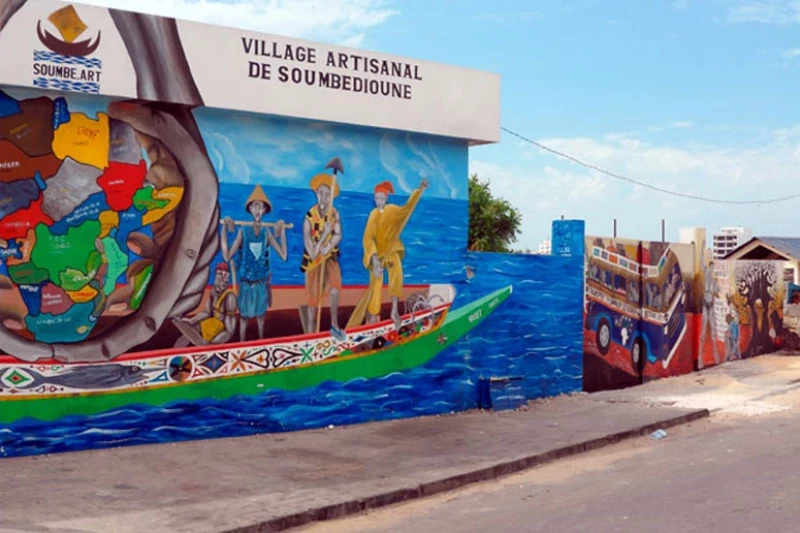
The artisan village of Soumbédioune is an iconic location situated in Dakar, the capital of Senegal. It's an artisan market where visitors can discover and purchase a wide variety of traditional Senegalese handicrafts, such as wood carvings, silver and bronze jewelry, hand-dyed textiles, woven baskets, African musical instruments, canvas paintings, and much more.
Soumbédioune is highly popular among tourists and Dakar locals alike for its lively atmosphere and diverse array of artisanal products. Visitors can not only buy unique and authentic souvenirs but also observe artisans at work in their workshops, providing an immersive experience into Senegal's artisan culture.
In addition to handicrafts, the Soumbédioune village also houses restaurants and cafes where visitors can enjoy authentic Senegalese cuisine while soaking in the picturesque atmosphere of the market.
In summary, the Soumbédioune artisan village is a must-visit in Dakar, offering a rich cultural experience and a unique opportunity to explore traditional Senegalese craftsmanship.
13 - Senegalese cuisine tasting
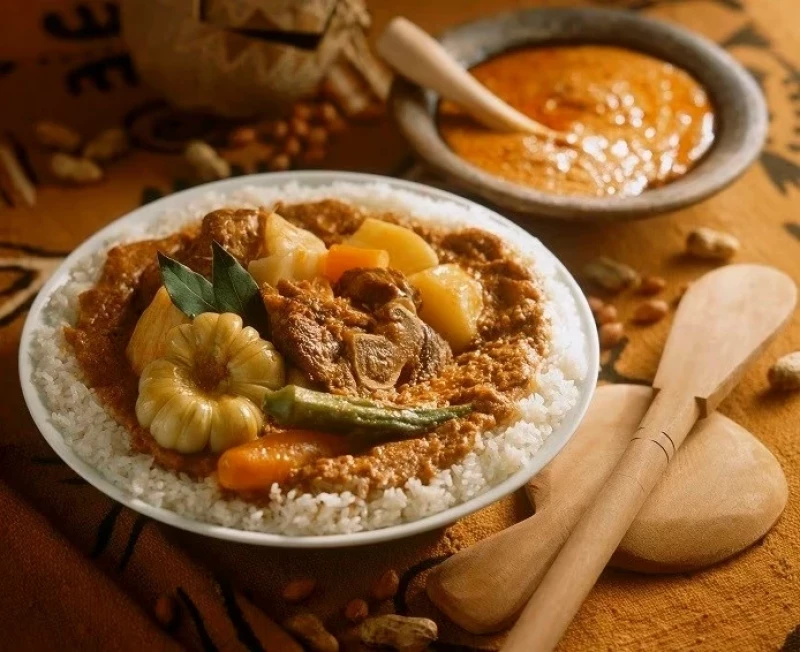
Exploring the vibrant flavors of Senegalese cuisine is a delightful culinary journey that captures the essence of West African gastronomy. Here's a glimpse into some of the iconic dishes you can relish:
-
Thieboudienne: Often hailed as the national dish of Senegal, Thieboudienne is a flavorful one-pot meal consisting of fish (typically grouper or red snapper), rice, and vegetables like carrots, eggplant, and cassava, all simmered in a savory tomato-based sauce.
-
Yassa Poulet: This tantalizing dish features marinated chicken cooked with onions, mustard, and lemon juice. The result is tender, succulent chicken infused with tangy and aromatic flavors.
-
Mafe: Mafe is a hearty peanut stew that combines meat (often lamb or beef) with vegetables such as sweet potatoes, cabbage, and carrots. The creamy peanut sauce imparts a rich and nutty taste to the dish, making it a comforting and satisfying meal.
-
Dibi: Dibi, also known as grilled lamb, is a beloved street food in Senegal. The succulent lamb pieces are marinated in a blend of spices, then grilled over an open flame until charred and perfectly cooked. It's often served with mustard sauce and bread for a deliciously satisfying experience.
-
Ceebu Jen: Similar to Thieboudienne, Ceebu Jen is a rice-based dish but with a twist. Instead of fish, it features flavorful marinated meat (commonly beef or lamb) served with rice and an assortment of vegetables in a tomato-based sauce.
-
Accara: Accara, or black-eyed pea fritters, are a popular snack or appetizer in Senegal. The black-eyed pea batter is seasoned with onions, garlic, and spices, then deep-fried until golden brown and crispy. They're often served with a spicy dipping sauce for an extra kick.
-
Bissap: To wash down these delectable dishes, indulge in Bissap, a refreshing hibiscus drink infused with ginger, mint, and sugar. Its vibrant red hue and tangy-sweet flavor make it a beloved beverage across Senegal.
-
Thiakry: For dessert, treat yourself to Thiakry, a creamy millet pudding flavored with vanilla, coconut, and sometimes served with a sprinkling of raisins or nuts. It's a delightful way to end your Senegalese feast on a sweet note.
From aromatic stews to savory grilled meats and refreshing beverages, Senegalese cuisine offers a myriad of flavors and textures that will tantalize your taste buds and leave you craving for more. Bon appétit!
Dakar - Where to Stay?
When choosing the best neighborhood to stay in Dakar during your visit, you'll want to consider several factors such as your budget, preferences for amenities and atmosphere, as well as the main sites you wish to visit. Here are some popular neighborhoods in Dakar and what they offer:
-
Les Almadies: This neighborhood located in the northwest of Dakar is known for its luxury hotels, upscale restaurants, and stylish boutiques. It's also where you'll find some of the city's most beautiful beaches. Les Almadies is ideal if you're looking for a luxurious stay and want to enjoy Dakar's seaside atmosphere.
-
Plateau: The Plateau is Dakar's central business district, home to many government offices, businesses, and financial institutions. You'll also find mid-range hotels, restaurants, as well as historical sites like Independence Square and Sandaga Market. Plateau is great if you want to be in the heart of the action and have easy access to the city's main attractions.
-
Mermoz and Fann: These residential neighborhoods located in the southwest of Dakar offer a mix of tranquility and amenities. You'll find mid-range hotels, restaurants, shops, as well as pleasant parks and green spaces. Mermoz and Fann are ideal if you're looking for a quiet residential area while still being close to the city center.
-
Yoff and Ngor: These neighborhoods located in the north of Dakar are known for their laid-back atmosphere, lively beaches, and surf scene. You'll find a range of accommodation options, fresh seafood restaurants, and a relaxed vibe. Yoff and Ngor are perfect if you're seeking a beach-focused stay with water activities.
Depending on your preferences and interests, one of these neighborhoods may suit your stay in Dakar. Be sure to do thorough research and book your accommodation in advance to ensure availability and get the best deals.
Dakar - How to get around?
To get around and explore Dakar, you have several transportation options depending on your budget, comfort level, and preference for independence:
-
Taxi: Taxis are widely available in Dakar and are a convenient way to get around the city. You can hail a taxi on the street or find them at taxi stands. Make sure to negotiate the fare before getting in, as prices can vary.
-
Car rapide: Car rapides are colorful minibusses that are a popular mode of transportation in Dakar. They typically follow fixed routes and can be an economical option for getting around the city. However, they can be crowded and sometimes unreliable in terms of schedules.
-
Bus: Dakar also has a public bus network, although it may not cover all neighborhoods comprehensively. Buses are a budget-friendly option for getting around, but they may be less comfortable and slower than other modes of transportation.
-
Car rental: If you prefer having your own vehicle and greater freedom of movement, you can opt for car rental. Many car rental agencies are available in Dakar, but be sure to check local driving conditions and obtain adequate insurance.
-
Uber or other ride-hailing services: Ride-hailing services like Uber are also available in Dakar, providing an alternative to traditional taxis. These services can be convenient and often offer fixed, transparent fares.
-
Walking: In some neighborhoods of Dakar, such as Plateau, it's possible to get around on foot to explore nearby attractions. It's a pleasant way to experience the city, but keep in mind that some parts of the city may be extensive to walk through.
Whichever mode of transportation you choose, make sure to plan your travels in advance and
Dakar - Best period
The best time to visit Dakar depends on your preferences regarding climate and activities. Here's an overview of the seasons in Dakar:
-
Dry Season (November to May): This period is generally considered the best time to visit Dakar. From November to May, you'll experience pleasant temperatures, minimal rainfall, and sunny skies. It's the ideal season for enjoying the beaches, exploring the city, and engaging in outdoor activities.
-
Rainy Season (June to October): Dakar experiences a rainy season from June to October, with more frequent and sometimes heavy rainfall. Temperatures remain warm during this period, but humidity can be high. While the rains may make some activities more challenging, this time can also be a good opportunity to see lush vegetation and benefit from lower accommodation rates.
In general, the period from November to May is recommended for visiting Dakar due to the more stable and pleasant weather conditions. However, if you're looking for lower accommodation rates and don't mind occasional showers, the rainy season can also be an interesting option.
It's also worth noting that Dakar hosts several cultural events and festivals throughout the year, so be sure to check the events calendar if you're interested in attending local festivals or special celebrations during your visit.
